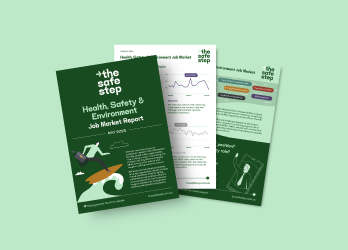HSE Board Governance - Transform Safety Leadership
Page Published Date:
September 2, 2025
Board directors may be asking the wrong safety questions and while traditional metrics like LTI rates dominate boardroom conversations, the real drivers of workplace safety remain hidden in plain sight. It's time to transform how boards engage with health and safety professionals for better governance.

The disconnect between boardrooms and safety outcomes
This challenge was a theme at our Sydney HSE Executive Leaders Forum in July, where senior leaders explored how to influence better governance through their professional practice. The discussions revealed a stark reality: many boards remain stuck in outdated safety governance patterns that limit their effectiveness.
HSE leaders are increasingly focused on bridging this divide, working to cultivate leadership that drives the right safety and people care mindsets. Yet across Australian boardrooms, a concerning pattern emerges, directors receive often, sanitised safety reports focused on lag indicators while missing the strategic governance insights that could prevent serious incidents.
The New Zealand HSE leaders community recognised this challenge and developed principles-based governance frameworks that fundamentally changed how boards approach safety oversight. Their success demonstrates what's possible when directors shift from passive reporting recipients to active safety leaders who ask better questions and make better decisions.
Industry analysis indicates that in 2025, HSE professionals are not just enforcing rules but driving change. They are becoming central figures in boardroom discussions, influencing operational strategy and business outcomes. This creates real opportunities for governance transformation.
Three critical areas demanding board attention
Strategic risk visibility
- Boards get reports about previous month's incidents (looking in the rear-view mirror) but stay clouded to tomorrow's serious risks. Your organisation may have multiple critical risk scenarios that could lead to major harm. Do your senior leaders and directors know what they are?
- Smart boards ask different questions. Instead of celebrating zero harm months, they want to know: "Which critical controls were vulnerable or failed this quarter?", "Where are we cutting corners on safety spending?" And “what should we be paying more attention to?”
Director competency and curiosity
- Most directors don't understand the complexity of safety well enough to challenge what management may be telling them and the best boards admit this knowledge gap and do something about it. They invest in director education, how to be better informed and what builds real understanding, not just compliance awareness. They create space for directors to ask the right questions.
Business integration
- Investors now care about safety performance as much as financial results. ESG reporting requirements mean your safety record directly impacts your company's value and reputation.
- Boards need simple ways to connect safety decisions with business outcomes. This isn't about compliance anymore. It's about protecting shareholder value and maintaining social licence to operate to protect what matters - our people.
Practical steps for governance transformation
Change what boards talk about
- Stop focusing on the “rear view mirror” of previous month's incident numbers. Start discussing critical risks, vulnerabilities and control effectiveness. Board papers should show which controls protect against fatal or serious incident scenarios and whether they're working properly.
- Run quarterly "governance health checks" where directors can deep dive and honestly assess how well they're overseeing safety. Simple questionslike "Are we being curious enough?" can reveal gaps.
Build Director confidence
- Most directors know they don't know enough about safety. Fix this with targeted education that's designed for boards, not safety officers. Focus on governance principles rather than technical details.
- Set up informal sessions where directors can ask basic questions without feeling exposed. Peer networks work well for sharing real experiences.
- Promote deep dives into the critical risk areas to shed light on where the issues are within the operations and how they can be/are controlled.
Fix the committee structure
- Many boards dump everything safety-related into audit committees. Review whether this actually works or if you need dedicated risk oversight.
- Create clear guideance about when safety issues escalate to board level. Directors should hear about emerging problems, not just completed investigations.
How The Safe Step can help
Getting board governance right requires deep industry experience and practical know-how. The Safe Step's strategic advisors are seasoned HSE executives who've sat in boardrooms and understand what works. Our advisors have successfully guided leadership teams through governance transformation and know how to translate complex safety risks into board-level conversations that drive real change.
Whether you're strengthening governance frameworks or responding to regulatory shifts, our Strategic Advisors
Greg Lazzaro and
Rod Maule combine years of executive experience with proven implementation approaches.




